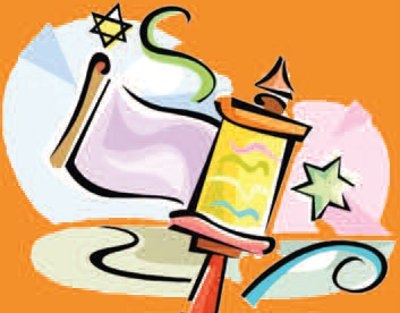Giving Proper Thanks at Purim
The rules of expressing thanks (hakarat haTov) are very special in Judaism. The Talmud in Tractate Sota (40a) asks the following question: "When the Hazan (prayer leader) in his repetition of the Amida recites Modim (We thank you, O' Lord), what do the people in the synagogue say?" Various rabbis of the Talmud make assorted suggestions which Rav Pappa combined together into the text of Modim de-Rabbanan that we now say.
But all this leaves us with a basic question. Why does the Talmud's question even begin? When the Hazan repeats aloud other sections of the Amida - like Ata honen (Give us understanding), Refa'einu (Heal us) or Shema koleinu (Hear our prayers) – what does the community do? They listen attentively and answer "Amen".
Why should Modim be different than the rest of the repetition? Why is the congregation expected to say anything during Modim?
Rabbi Yehuda Aryeh Leib Alter of Ger (The Sefat Emet, 1847-1905) gives a deep and insightful answer. Of the 19 benedictions of the Amida, 18 are praise(s) or requests. Only Modim is pure thanks to the Creator for his daily sustenance and continuous natural miracles. When it comes to requests and praise, you can have someone else, the Hazan, recite it for you. But when it comes to expressing gratitude, each of us has to do it ourselves. The community cannot stand idly by while the Hazan says "Thanks"; they each have to do so of their own accord. Similarly, when a farmer brings his first fruit (bikkurim) to the Temple, the text of thanks (mikra bikkurim) that is recited can only be done by the farmer himself. There can be no intermediaries. Clearly, giving proper thanks is a very serious matter for a Jew.
In this regard, my brother, Rabbi Shael Frimer, suggested that giving proper thanks is one of the underlying themes of the Purim Megilla, which we read next month. At the very end of the ninth chapter, the Book of Esther (9:31) records that letters were sent out to all the Jewish communities "to confirm these days of Purim in their appointed times, as Mordechai the Jew and Esther the queen had enjoined them…." By contrast, a few short verses later, we read in the beginning of the tenth chapter (10:2): "And all the acts of his power and of his might, and the full account of the greatness of Mordechai, how the king advanced him, are they not written in the chronicles of the kings of Media and Persia?"
We see that in contradistinction to the Medes and the Persians, who only acknowledged the role of Mordechai, the Jews were careful to emphasize the central role played by Esther as well. Perhaps this was a gender issue for these chroniclers – as seen earlier in the Purim story, but it clearly was not so for the Jews. To cap it off, the Purim scroll in Jewish Tradition is referred to as the Book of Esther, properly acknowledging her central role.
Surprisingly, the one whose name is not mentioned in the Megilla is the Almighty's – but that's for another time.
Chag Purim Sameach to all.
Rabbi Dr. Aryeh A. Frimer is the Ethel and David Resnick Emeritus Professor of Active Oxygen Chemistry at Bar Ilan University. This email address is being protected from spambots. You need JavaScript enabled to view it..








Comments